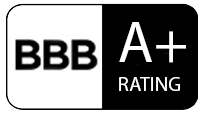Medical literature has repeatedly demonstrated that physical inactivity is an independent risk factor for heart disease, back problems, and many other health conditions. Pilots who desire to reduce their medical risks should consider an active lifestyle as a pre-requisite to flight fitness. The many medical benefits of regular activity include cholesterol and blood pressure control, mood stabilization, and the prevention of many diseases including diabetes and heart disease.
Pilot Medical Solutions provides each client with an individualized program to achieve the fitness level required for FAA medical certification.
General guidelines for exercise. – Consult your physician first
Warm-Up Ease into vigorous activity with 5-10 minutes of easy level activity which involves the muscles you will be exercising. Once the muscles are warm, then stretch. Pre-exercise stretching is not recommended unless explosive sports or heavy lifting will be attempted.
Cool-Down After working out, gradually decrease the intensity of exercise for 5-10 minutes and then stretch again. A Post-activity stretching/Cool-Down is important to gain flexibility, prevent cardiovascular problems, and enhance future performance.
F I T – Frequency Intensity Time
Frequency (How often you exercise)
AEROBIC (walking, biking, etc.)
- 3-6 times per week.
- If weight loss is your goal, a minimum of 5 days is ideal.
- Choose at least 2 different type activities and alternate.
- Increase total daily activity whenever possible, i.e., take the stairs vs. an elevator.
ANAEROBIC (weights/calisthenics)
- 3 times per week.
- Rest 48 hours before repeating the same weight/calisthenics exercise.
- Most people use either Monday-Wednesday-Friday or Tuesday-Thursday-Saturday.
STRETCHING
- See Flexibility Guide
- Warm-up first, then stretch before exercise.
- Also, stretch after an exercise session.
Intensity (The level of exertion)
AEROBIC
Monitor the intensity of your exercise by the Perceived Exertion Scale*. This method is superior to heart rates when taking cardiovascular medications.
PERCEIVED EXERTION SCALE* (RPE)©Gunner Borg
HOW DOES THE EXERCISE FEEL? RATING
Nothing at all
Extremely Light
Very Light
Light
Moderate
Somewhat Heavy
–
–
–
Heavy Very Heavy–
Extremely Heavy Maximal0
0.5
1
2
3
4
5
6
7
8
9
10
ANAEROBIC
- For each exercise, begin with a weight/resistance much lighter than you can exercise with.
- Use this amount as a warm-up and perform one set of 8 repetitions. Next, increase the wt/resistance to an amount you can perform 10 repetitions with and do 3 sets.
- Weight/resistance should be increased when you can perform 15 repetitions for 3 sets. Vary the intensity weekly.
STRETCHING (See Flexibility Guide)
- Perform each stretch only to the point that you feel a slight tension. Breathe deeply.
- Be in complete control of each stretch.
- Stretch slowly and do not bounce.
Time (The length of your workout)
AEROBIC
- When beginning a new exercise, start with 5-15 minutes.
- Increase the time to 20-45 minutes once the exercise becomes easier.
- If weight loss is your goal 30 minutes or more is ideal.
ANAEROBIC
- Each set of 10 repetitions should take 30-45 seconds.
- Allow one minute of rest between sets.
- A total of 3-5 minutes for each exercise performed.
STRETCHING (See Flexibility Guide)
- Hold each stretch for 20-30 seconds.
__________________________



